Diversity has never been the modeling industry’s strong suit, as highlighted by Vogue Italia‘s groundbreaking “Black Issue” from 2008. What was so groundbreaking was the fact that it happened at all — an international fashion magazine drawing attention to racism in its own industry. But before that “Black Issue,” these 10 ladies were making strides on and off the runway.
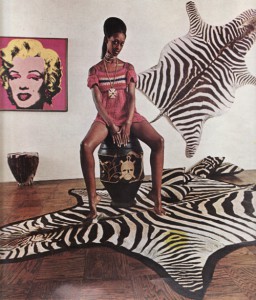 Princess Elizabeth of Toro (1936) The daughter of the King of Toro, one of the four tribes that originally ruled Uganda, Elizabeth was the third African American woman to attend Cambridge University and Uganda’s first female lawyer. When England’s Princess Margaret invited her to model in a charity fashion show, Elizabeth’s modeling career took off and she graced the pages of Vogue and the cover of Harper’s Bazaar in 1969.Jacqueline Kennedy Onassis met Elizabeth at a party and convinced her to move to New York where she modeled for the legendary Irving Penn.
Princess Elizabeth of Toro (1936) The daughter of the King of Toro, one of the four tribes that originally ruled Uganda, Elizabeth was the third African American woman to attend Cambridge University and Uganda’s first female lawyer. When England’s Princess Margaret invited her to model in a charity fashion show, Elizabeth’s modeling career took off and she graced the pages of Vogue and the cover of Harper’s Bazaar in 1969.Jacqueline Kennedy Onassis met Elizabeth at a party and convinced her to move to New York where she modeled for the legendary Irving Penn.
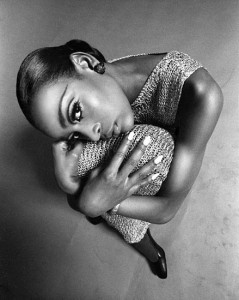 Naomi Sims (1948-2009) Before there was Naomi, there was Naomi. The first black supermodel, Naomi Sims worked overtime to break into what is still a largely racist industry. Sims officially made it when she appeared in a national AT&T commercial, the cover of Ladies’ Home Journal and the cover of Life all in 1968.
Naomi Sims (1948-2009) Before there was Naomi, there was Naomi. The first black supermodel, Naomi Sims worked overtime to break into what is still a largely racist industry. Sims officially made it when she appeared in a national AT&T commercial, the cover of Ladies’ Home Journal and the cover of Life all in 1968.
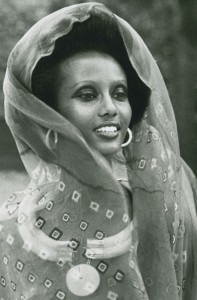 Iman (July 25, 1955) With her long, graceful neck and statuesque beauty, Iman looks like she was actually plucked out of a Somalian village and thrown on a runway, but in reality she was discovered by photog Peter Beard while she was studying political science in Nairobi. Upon coming to New York in 1975, however, she happily played along with the myth that Beard had discovered her as “a teen tribeswoman tending 500 cattle and sheep in a Kenyan game preserve.” What followed is one of the greatest careers in modern fashion history: a muse for Yves Saint Laurent, Issey Miyake and Calvin Klein, an entrepreneur and the one woman (or man) to tame David Bowie.
Iman (July 25, 1955) With her long, graceful neck and statuesque beauty, Iman looks like she was actually plucked out of a Somalian village and thrown on a runway, but in reality she was discovered by photog Peter Beard while she was studying political science in Nairobi. Upon coming to New York in 1975, however, she happily played along with the myth that Beard had discovered her as “a teen tribeswoman tending 500 cattle and sheep in a Kenyan game preserve.” What followed is one of the greatest careers in modern fashion history: a muse for Yves Saint Laurent, Issey Miyake and Calvin Klein, an entrepreneur and the one woman (or man) to tame David Bowie.
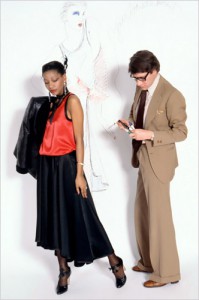 Mounia Born in Martinique, Mounia was Yves Saint Laurent’s first black muse and his favorite model. She was also the first black model he used in his haute couture shows. Mounia rose to prominence following YSL’s classic Porgy & Bess show, which he designed around her and led to covers of WWD and French Elle.
Mounia Born in Martinique, Mounia was Yves Saint Laurent’s first black muse and his favorite model. She was also the first black model he used in his haute couture shows. Mounia rose to prominence following YSL’s classic Porgy & Bess show, which he designed around her and led to covers of WWD and French Elle.
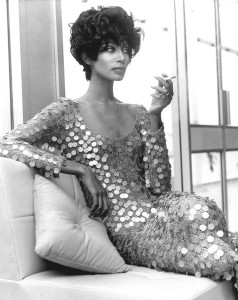 Donyale Luna (1945-1979) Peggy Ann Freeman escaped the slums of Detroit for the glitz and glamour of New York City. Here, as Donyale Luna, she was exotic and intriguing whereas in Detroit she “wasn’t considered beautiful or anything.” At 6’2, with her already striking features and ultramarine contacts, she was in high demand, becoming the first black woman to cover British Vogue in 1966. Donyale lived like, partied like and dated rock stars only to eventually die like one when she overdosed in 1979.
Donyale Luna (1945-1979) Peggy Ann Freeman escaped the slums of Detroit for the glitz and glamour of New York City. Here, as Donyale Luna, she was exotic and intriguing whereas in Detroit she “wasn’t considered beautiful or anything.” At 6’2, with her already striking features and ultramarine contacts, she was in high demand, becoming the first black woman to cover British Vogue in 1966. Donyale lived like, partied like and dated rock stars only to eventually die like one when she overdosed in 1979.
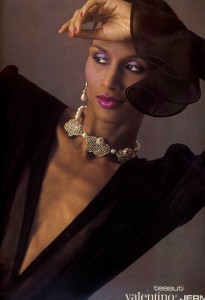 Beverly Johnson (Oct. 13, 1952) Bev Johnson’s name will go down in history as the first black woman on the cover of U.S. Vogue in 1974, a watershed moment for models of all diversities. Johnson logged over 500 covers in her career before embarking on a mildly successful acting career and starting her own line of wigs.
Beverly Johnson (Oct. 13, 1952) Bev Johnson’s name will go down in history as the first black woman on the cover of U.S. Vogue in 1974, a watershed moment for models of all diversities. Johnson logged over 500 covers in her career before embarking on a mildly successful acting career and starting her own line of wigs.
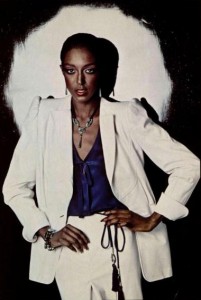 Billie Blair (1946) A former nursing student from Flint, Michigan, Blair became “New York’s newest superstar model” and the “standard of female beauty” after setting Paris ablaze as one of the stars of the Battle of Versailles in 1973. She commanded $400 a day — years before Linda Evangelista wouldn’t get out of bed for less than $10,000 — though still making her one of the best-paid runway models at the time.
Billie Blair (1946) A former nursing student from Flint, Michigan, Blair became “New York’s newest superstar model” and the “standard of female beauty” after setting Paris ablaze as one of the stars of the Battle of Versailles in 1973. She commanded $400 a day — years before Linda Evangelista wouldn’t get out of bed for less than $10,000 — though still making her one of the best-paid runway models at the time.
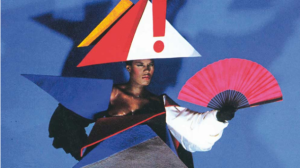 Grace Jones (May 19, 1948) Part supermodel, part mental patient, part disco/New Wave/dancehall queen, Grace Jones is an enigma, wrapped in a question, wrapped in a kimono. Her distinctive style and personality are a constant source of inspiration, from musicians like Rihanna and Lady Gaga to magazine editorials, who find her a favorite subject in particular. And is it any wonder? That type of crazy comes along but once in an androgynous moon.
Grace Jones (May 19, 1948) Part supermodel, part mental patient, part disco/New Wave/dancehall queen, Grace Jones is an enigma, wrapped in a question, wrapped in a kimono. Her distinctive style and personality are a constant source of inspiration, from musicians like Rihanna and Lady Gaga to magazine editorials, who find her a favorite subject in particular. And is it any wonder? That type of crazy comes along but once in an androgynous moon.
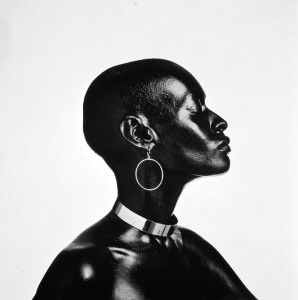 Pat Evans Black, bald and beautiful, Evans shaved her head in the 60s as a protest against the modeling industry’s obsession with straight hair. The decision proved fortuitous for Evans, leading to appearances inVogue and Harper’s Bazaar and, perhaps most famously, a quartet of album covers by funk outfit, The Ohio Players. In 1974, Evans threw it all away when she published a scathing article in Essence magazine attacking the industry’s racism and its discrimination, effectively ending her career.
Pat Evans Black, bald and beautiful, Evans shaved her head in the 60s as a protest against the modeling industry’s obsession with straight hair. The decision proved fortuitous for Evans, leading to appearances inVogue and Harper’s Bazaar and, perhaps most famously, a quartet of album covers by funk outfit, The Ohio Players. In 1974, Evans threw it all away when she published a scathing article in Essence magazine attacking the industry’s racism and its discrimination, effectively ending her career.
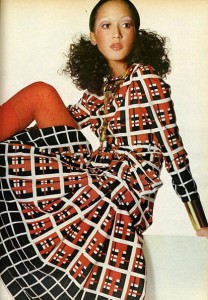 Pat Cleveland (June 23, 1952) Cleveland was discovered in the subway in 1967 by illustrious fashion illustrator Antonio who admitted that he thought she was ugly, but with his help she became a dynmic and versatile force in print and on the runway. Along with Blair, Cleveland was one of the African-American models that entranced the French during the Battle of Versailles.
Pat Cleveland (June 23, 1952) Cleveland was discovered in the subway in 1967 by illustrious fashion illustrator Antonio who admitted that he thought she was ugly, but with his help she became a dynmic and versatile force in print and on the runway. Along with Blair, Cleveland was one of the African-American models that entranced the French during the Battle of Versailles.
via FashionIndie




